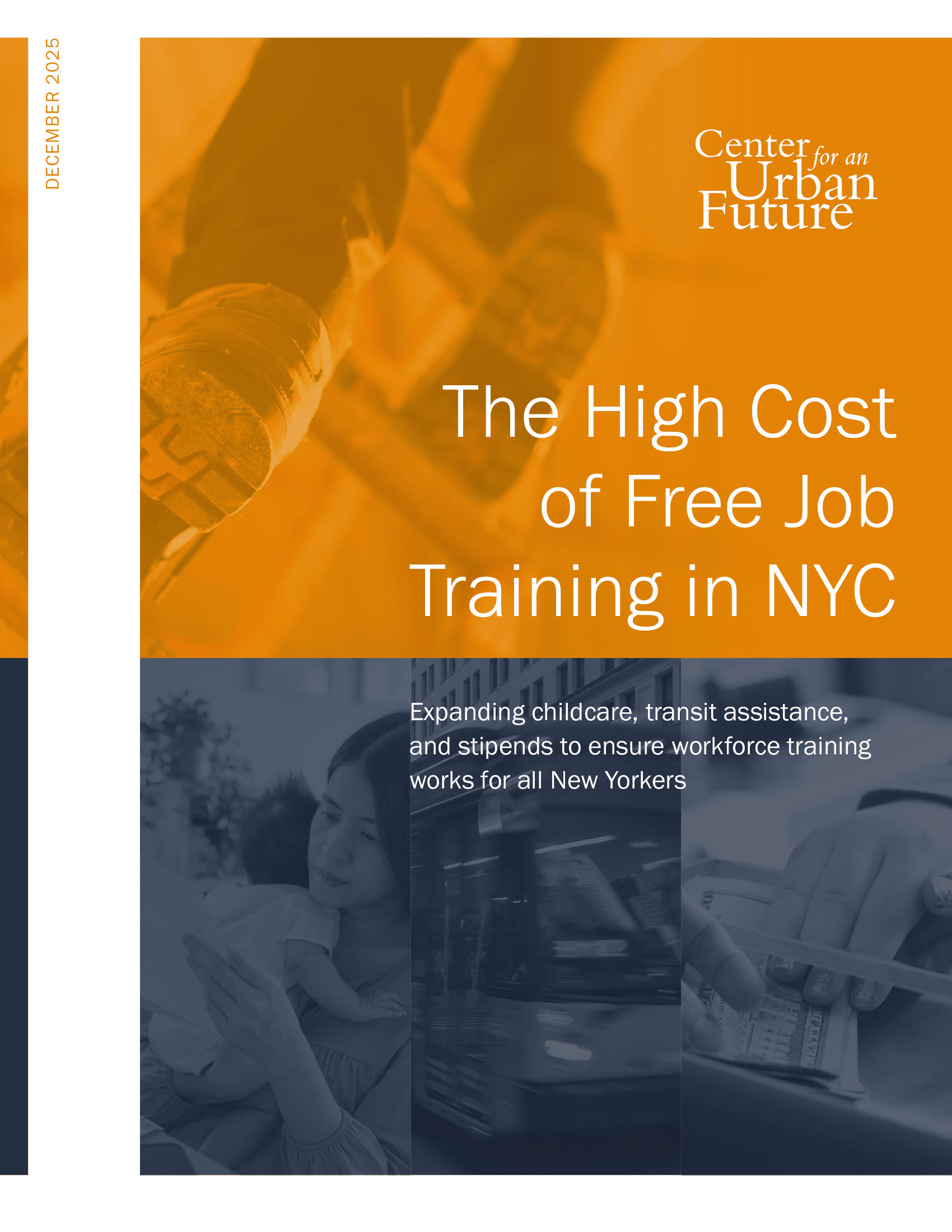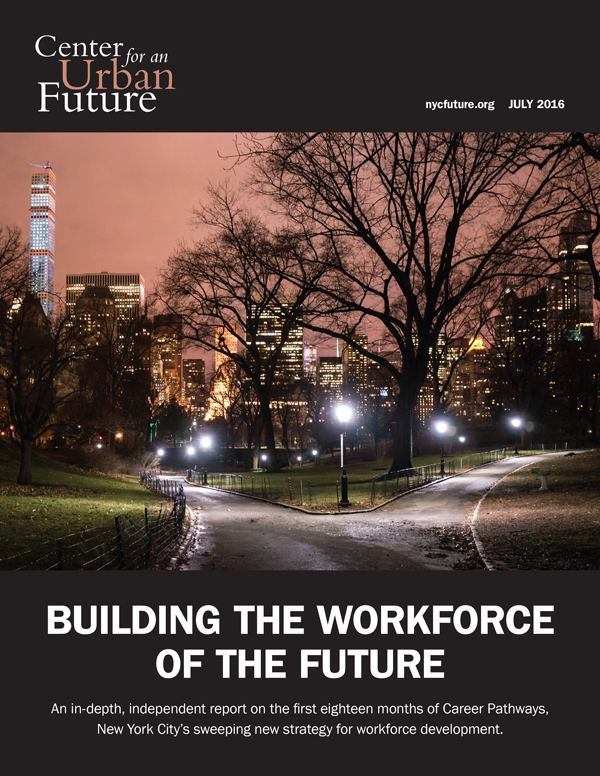Recommendations
New York State can dramatically expand the capacity of its workforce development system in 2018 and ensure that it is far better able to reach and serve lower-skilled workers. Policymakers should seize the opportunity to make a major strategic investment in workforce development—benefiting millions of workers across the state and bolstering the economy—while adding support for several key initiatives that can ensure the plan is as effective and inclusive as possible.
The State Legislature should fund $175 million in new investments for workforce development. Given the needs of New York’s workforce and the threat presented by the growing gap in middle-skilled jobs, New York State should seize the moment and direct $175 million in funding toward workforce development programs and initiatives statewide. Of that total, at least $150 million should be new funding and no more than $25 million repurposed from other programs.
The State Legislature should invest in adult literacy and English language instruction as part of its workforce development investment. A workforce strategy without adult education excludes more than 3 million New Yorkers and their prospective employers. By taking the long overdue step of substantially increasing funding for adult education programs, New York can build pathways for economic mobility that reach immigrants and low-literacy adults, bringing them into the skilled workforce.
The State Legislature should dramatically scale up bridge programs. Contextualized bridge programs represent an important resource for accelerating the ability of lower-skilled adults to obtain postsecondary credentials and enter workforce training programs. But it is a resource that the state has yet to tap. Policymakers should address this gap by funding a significant expansion of bridge programs, along with clear guidelines as to the essential characteristics of the most effective model.9
The State Legislature should establish a centralized data clearinghouse to provide cutting-edge workforce analyses. Today, various state agencies collect valuable information and then leave it to rot in hermetically sealed databases, squandering the larger value of that data to program managers, college administrators, economic development officials, and students. New York should create a central data clearinghouse that collects, integrates, and reports labor market trends, workforce outcomes, and education data in a way that protects privacy while enhancing evidence-based decision-making for all stakeholders.
The Office of Workforce Development should be given the authority to transform the state’s workforce system—and use it. A centralized statewide workforce development office is a smart step toward a more cohesive and accountable system. But the new Office of Workforce Development needs the power to align the state’s workforce investments and hold state agencies accountable for statewide outcomes. Today, many programs serve overlapping client populations, yet operate autonomously, with little planning across program boundaries. The newly established Office of Workforce Development should undertake to align the federal and state systems and programs that provide workforce-related services, maximizing efficiency and ensuring that limited funding goes as far as possible.
In addition to the key points outlined in this brief, the Office of Workforce Development should establish a strategy to blend economic development and workforce development investments. Creating a grant program of workforce investments through the state’s Regional Economic Development Councils, as the state has done, is good for business and beneficial to workers seeking opportunity in growing industries. But the next step should be to make workforce development a key component of the state’s economic development strategy. This could include incorporating customized training into subsidy programs, or developing partnerships between employers and training providers before the first shovel hits the dirt.
9. The most effective bridge programs combine occupationally contextualized adult education—including literacy and math—along with employer-informed job training, and either provide or lead to a high school equivalency and/or an industry-recognized certificate or postsecondary credential.




